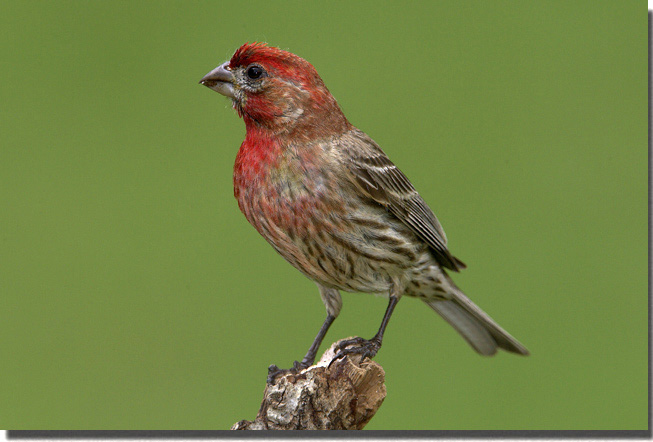

|
House Finch |
|
Carpodacus mexicanus |
| Description: 5-6" Sparrow-sized, male streaked brown with bright red breast, forehead, eyebrow and rump, female lacks red, similar to female Purple Finch, but more finely streaked | Habitat: Urban areas, suburbs, parks, farms, ranches, roadsides, feeders, desert. Gregarious and very abundant. Introduced to Long Island, New York in 1971. Has spread west very rapidly. One of most abundant birds in the west. |
| Nesting: 4-5 pale blue eggs lightly spotted with black in a well-made cup of grass in a bush, thicket or natural cavity or on a building | Range: western species occurred naturally to Nebraska, introduced in eastern section, spreading to east half of continent |
| Voice: clear warble like that of Purple Finch, but weaker and less musical, sings from high in a tree for extended periods | Diet:
fruit buds, tree sap, consumes virtually no insects; feeds nestlings almost entirely on seeds |
| Notes: population is descended from cage birds released in the 1940s, competes with House Sparrow for nest sites |
| When present in Oklahoma: mostly south and central in winter, statewide in summer |